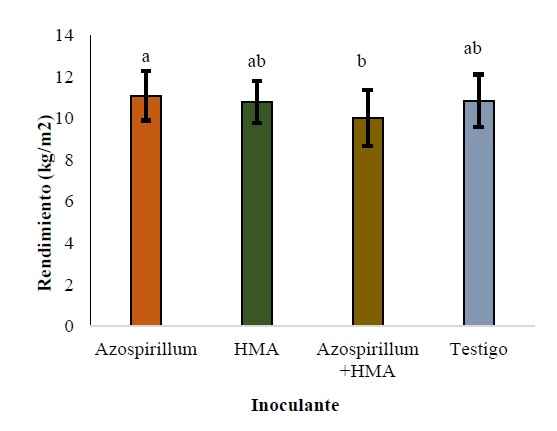Chemical fertilization and inoculation with Azospirillum and mycorrhizal fungi in tomato crop under greenhouse conditions
DOI:
https://doi.org/10.28940/terra.v41i0.991Keywords:
fruit quality, coinoculation, HMA, inoculant fertilization interactionAbstract
Tomato (Solanum lycopersicum L.) is one of the most important crops in the Mexican horticultural sector; currently, its production is based on the excessive use of chemical fertilizers. In 2016, an experiment was established under greenhouse conditions in order to evaluate the response in yield and fruit quality of Cid and Ramses indeterminate growth tomato hybrids to inoculation with Azospirillum sp., arbuscular mycorrhizal fungi (AMF) and dif ferent concentrations of nutrient solution in a hydroponic system. The experimental design was a 4*4*2 factorial in randomized blocks, with five repetitions and 3.5 plants m-2. The factors evaluated were: four levels of Steiner nutrient solution (100, 75, 50 and 25%), four levels of inoculation (without inoculation –Control–, Azospirillum –Azo–, AMF and coinoculation Azospirillum/AMF –AzAMF–) and the hybrids (HIB) Cid and Ramses. The variables evaluated were; yield (kg m-2), number of fruits (NFRU), average fruit weight (PPROF) in g, firmness (FIR) in kg m-2, total soluble solids (TSS) in °Brix, longitudinal diameter (DLONG) in mm and equatorial diameter (DECU) in mm. The results show that the 50% nutrient solution presented the highest yield (11.83 kg m-2). The inoculation with AzAMF induced the highest values of TSS (4.16 °Brix), while AMF, AzAMF and Azo presented firmer fruits with 3.1375 kg m-2), 3.0875 kg m-2) and 3.0825 kg m-2, respectively. The 100% nutrient solution with HMA and AzAMF showed the highest firmness values, while the best PPROF was detected with the 50% nutrient solution and Azo (101.56 g). The PSOLN by HIB interaction presented showed dif ferences in SST and NFRU. The interaction PSOLN, inoculation and hybrid exhibited significant ef fects on firmness quality, TSS and DECU. The concentration of the nutrient solution for tomato production can be reduced by 50 per cent.
Downloads
Publication Facts
Reviewer profiles N/A
Author statements
- Academic society
- Terra Latinoamericana
- Publisher
- Mexican Society of Soil Science, C.A.

















